What is my environmental footprint? How green am I already? What is the best way to become more sustainable? Where to start my transition towards greener living? All these questions came to my mind once I had decided that if I wanted to preserve my peace of mind I could not escape “going green.” It was time for me to know what my environmental footprint is and come up with my personal best way towards greener living.
I have been often overwhelmed with parenting my three spirited boys. So I knew that becoming more eco-friendly would take me out of my comfort zone, adding another layer of complexity to my daily life. Reading what others had written, I was particularly inspired by those who had chosen during a year to change one little thing each day to get out of their comfort zone. This seemed like an attainable way also for me to move forward and to avoid finding myself soon disillusioned, burned out, or even divorced!
How I got started with my environmental journey
I chose 352 more or less realistic ‘going green’ tips from various sources online. The selection contains those that I thought I could try to introduce into my life without scaring my family too much. I then organised these by weekly themes and decided to write one blog post per week for a year. In this way, I hoped to keep myself motivated and committed and to learn from others. I purposefully left the last few weeks of the year open in the planning in order to try out some tips that others suggested throughout the year.
One day before I started my 366-day challenge, we had a family meeting with all three kids – something we try to do regularly. We usually take turns (except the one-year-old) in moderating the discussions. We go around the table twice. First, everyone shares what they enjoyed doing with each family member recently. During the second round, each person mentions what he or she would like to change in the family. So when it was my turn, I shared about this project. In general, it went over well, but my 6-year-old said that it might be “too much work” for him to save the planet 🙂
My inspirations
As I love to express myself through art, I also made a collage out of about 366 pieces that I had painted beforehand. This work symbolises the Earth and accompanies this blog post on my website. I also read a lot about blogging – a totally new area for me. Some other bloggers who have inspired me are: Erica Layne, Leo Babauta and Rachel Lees. My husband helped me a lot with making my website – thank you Jim!
What is My Environmental Footprint: establishing the baseline
I believe that raising my awareness of what my environmental footprint is constitutes an important step towards eco-friendly living. We can only change the things we have awareness about. This first week, I thus carried out the following changes to measure what my environmental footprint is and to learn how eco-friendly I am already:
- Calculating our household’s carbon footprint
- Getting our energy audit
- Our well-done list
- Getting water audit
- Assessing our plastic footprint
- Measuring the length of my shower
- Exploring calculators that help to track if money is saved when going green
Carbon footprint calculator
I used the UN carbon footprint calculator to measure our household’s carbon footprint:

To calculate my personal carbon footprint, I used the carbonfootprint.com tool:
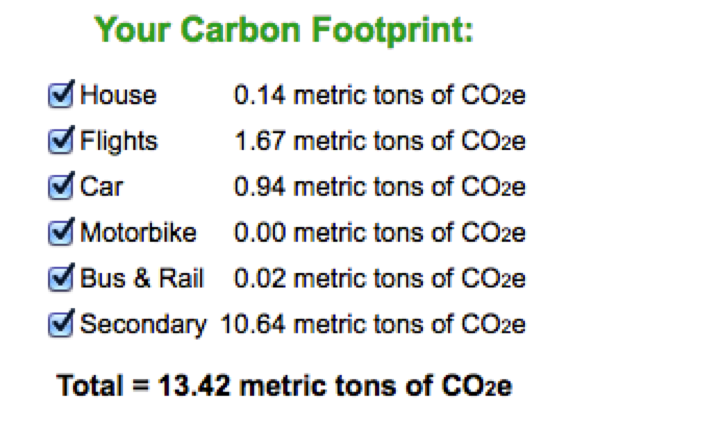
Compared to our fellow citizens in France, these environmental footprint related results above are nothing to be proud of; we clearly lag behind them. We are a family of five, bigger than an average French family. And both my and my husband’s families live far away abroad, increasing our number of flights. Still, we could do better!
As my husband had been the one in charge of dealing with energy and water providers, energy and water audits meant first of all bugging him with such inquiries as: how much electricity did we consume in the last 12 months? How much water did we use? How much gasoline does our car use per 100km (I use his car daily)? As with the carbon footprint, the results are not much to be very proud of yet: we consumed 14400 kWh of electricity during the last 12 months! For water, we asked the provider to give us a report of our yearly consumption, and we are still waiting their feedback.
Making the list of our eco-friendly changes we have already introduced to our life
This list came out like this:
- Recycling paper, metal, clothes, PET plastic, glass and used batteries
- Switching to energy efficient light bulbs (thanks to my husband!)
- Reducing air travel in 2019: for two destinations we wanted to visit, we made two road trips instead
- Doing shopping mostly with reusable bags and reducing our plastic use
- Mostly putting only full loads of laundry
- Taking leftovers home from restaurants
- Lowering the temperature at home in winter in 2019 compared to 2018
- Collecting rainwater and using it to water plants in the garden
- Using more glass jars for leftovers, or just a bowl and plate to cover food in the fridge instead of aluminum foil
- Eating vegetarian meals more often (special thanks to my oldest son!)
- Using fewer chemicals when cleaning the house and buying more eco-friendly cleaning products
- Planting more native trees
- Reusing gift wrapping paper
- Mostly showering instead of bathing
- Keeping cell phone and computer as long as possible
- Cleaning manually with a brush and vacuuming only every two weeks
- Trying to repair shoes instead of always buying new ones
- Giving away books and dishes I do not want any more instead of discarding them
- Buying eco-friendly food and some secondhand clothes
- Growing some vegetables and fruits in our garden
Various motives behind green actions
To some degree, we should be proud of ourselves, as we have started to take some steps to reduce our environmental footprint. And to become more eco-wise—although other motives sometimes played an important role. For instance, we lowered the temperature at home mostly because we were shocked after the first winter in the house when our electricity bill was very high. Or since I became a mother, I rarely have time for a bath. My motives for planting some more native trees were not totally shaped by my wish to support local biodiversity. I had seedlings naturally growing in the garden, and I just had to replant those into the hedge. Opting only for exotic ones scared me because we have had droughts for the last couple of years, and I feel pain when a plant or tree I love dies.
I am much nicer to myself, less perfectionist, embrace chaos more easily, and accept the things that do not go my way than I used to be before I became a mother of three spirited boys. So I have a habit today of celebrating my victories, as imperfect and small as they are!
What is my environmental footprint: Measuring the length of my shower
My average shower came out to be 5 minutes and 10 seconds. It was better than I thought, yet there are days when I put on a hair mask and, though I’m ashamed to admit it, sometimes it has happened that I brush my teeth under the running shower… So I have some way to go. On a positive side, some showers are about a minute, a reduction that mostly happens thanks to my kids 🙂
When I calculated our plastic footprint, rather bleak results emerged. I used the first tool that appeared by Google search, the earthday.org Plastic Pollution Calculator. The process was simple and straightforward, and the results showed the reality: despite some efforts, we still pollute a lot.
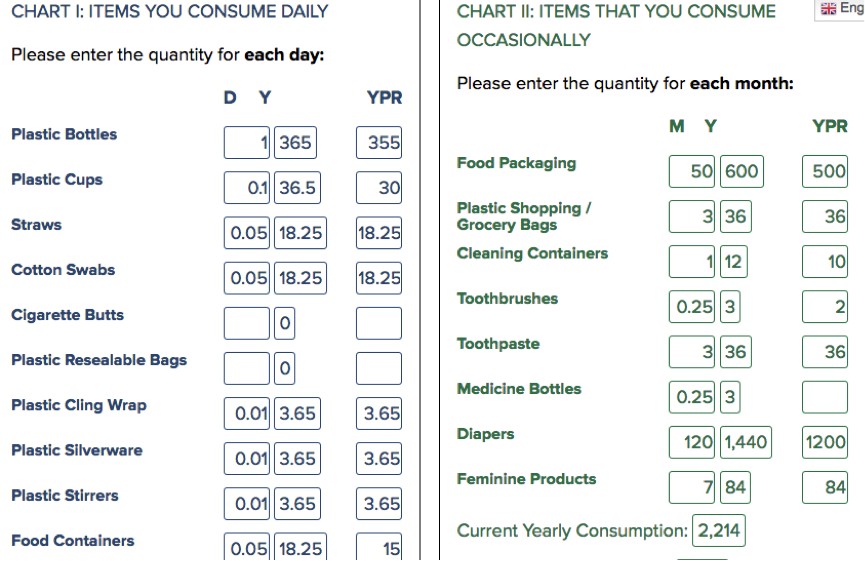
The D stands for daily, M for monthly, and Y for yearly consumption. I liked that with this calculator I could also set goals for how much I plan to reduce our consumption next year (the YPR). The calculator helped me to see where my priorities for plastic reduction need to be: reducing the amount of plastic bottles, food packaging, and diapers.
Challenges – Calculating the environmental footprint
As I had thought, there are a great many websites offering to calculate your carbon footprint. I chose few that Google gave me first and tried these out. Some were very general, some were more thorough, and my final results differed very much across different calculators. For instance, on the first try, one gave me 12,1 t CO2e while another one gave me 2,39 metric tons CO2. Partially it was due to my incorrect answers as I mixed up household and individual data (some calculators are not always clear). I was also aware of some of the data for my own household at first (e.g. electricity, how much fuel the car consumes, etc.).
Yet as well said by science writer Jacqueline Ronson: “Carbon footprint calculators don’t exist to be accurate. They exist to help people get a sense of which daily activities consume the most global resources, and provide suggestions on how to do your part to fight climate change.” My lesson was to find some calculators that I like and use their data as a baseline for further comparisons.
Challenges – Fear of getting started with my green journey
First I had many fears: will I be able to do all these things on the list for a year? Can I really keep up with writing weekly updates? Shall I really share so much of my daily life with so many people? What if no one likes what I write? etc. Yet to my surprise, once September – the month I had decided to shift to a more eco-friendly lifestyle – arrived, I felt less anxious regarding the whole going-green exercise. Once I was “in action,” these fears bothered me much less than in late August, for instance. Yet when they tried to come back during this past week, I just took a leap of faith. Deep down I knew that there was no other way to find peace of mind than just doing it despite the fears!
Tips and highlights of the week
The tip of this week would be:
- Establish your baseline and calculate what is your environmental footprint, but with a lot of self-love!
So I take with me from this week the feeling of being at peace and very happy with myself. It reminds me of when I quit smoking. For some years I was well aware that smoking was not good for me, yet I kept going. But when I stopped in 2010, this is how I felt – at peace with myself, hopeful, and proud of myself! Indeed, I am most probably in the “honeymoon phase” of this adventure, or what Leo Babauta calls Phase 1 in the process of How Shift Happens in Our Lives. Yet I still remain curious and excited to see how the next week goes! And I love that my husband has started to call me “my green queen” 🙂


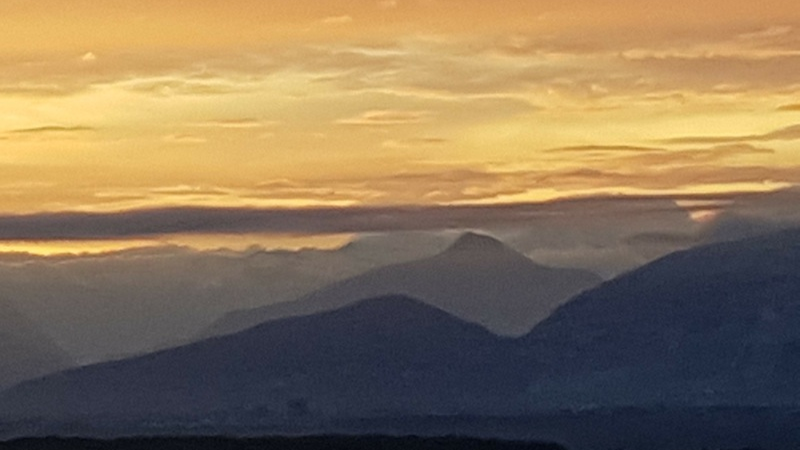
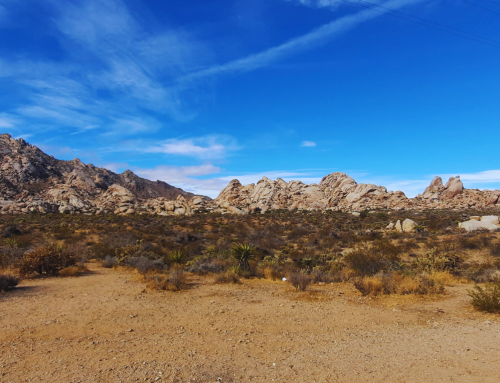
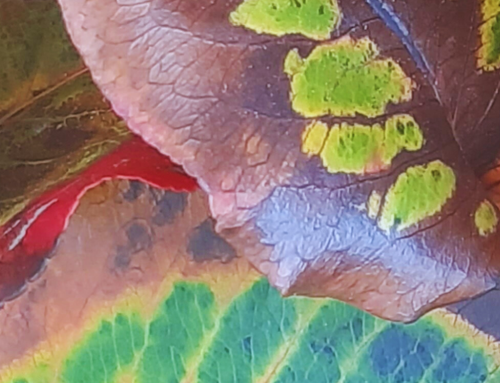
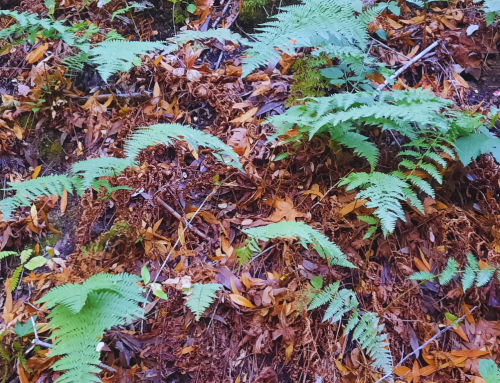
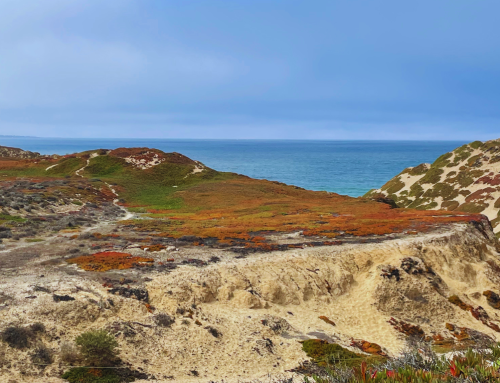
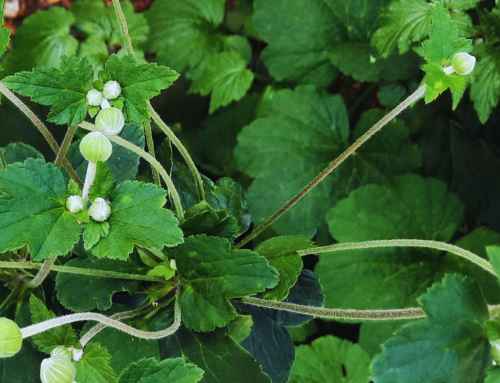

Lots of great suggestions & ideas here!!
Thank you Louise!
So inspiring!!!! I’m looking forward to read you this week
Thanks Maya!
Bravo, Veronika, I love what you’re doing!
Thank you Anne!
Hello!
I’m new here 🙂